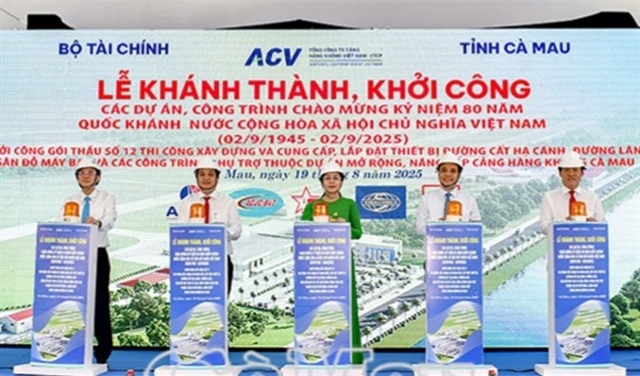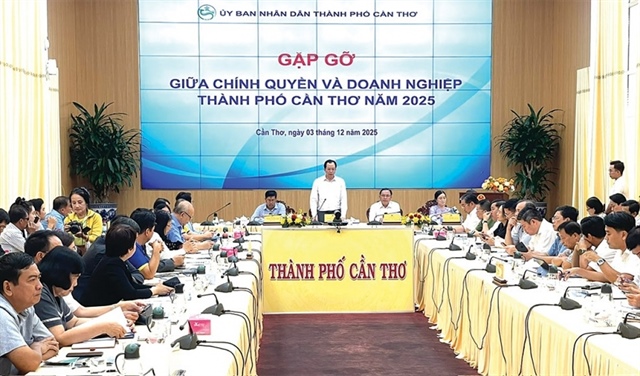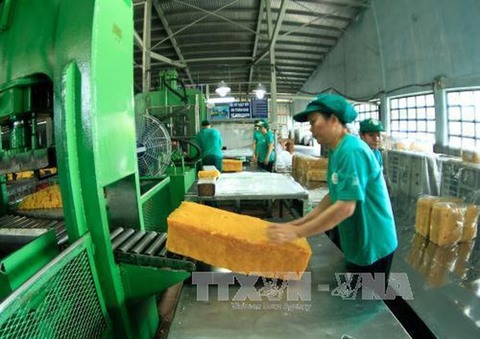Vietnam’s progress mirrored in that of East Asia: WB
Vietnam’s progress mirrored in that of East Asia: WB
Vietnam is a country on the move, whose progress is broadly mirrored in the progress of East Asia, where several countries have progressed from low-income to middle-income status in the past half century, said Country Director for the World Bank in Vietnam Ousmane Dione at a conference that was opened on Wednesday.
Speaking at the eighth plenary conference of the Public Expenditure Management Network in Asia (PEMNA) in the northern province of Quang Ninh from May 22 to 24, Dione said that Vietnam has experienced growth rates of 6.5% on average in the last five years while poverty has fallen from roughly 21% in 2010 to 9.8% in 2016.
PEMNA is a peer learning network of public financial management practitioners in Asia, grouping boasts 14 members, comprising all ASEAN countries plus China, Mongolia, and South Korea. Established in 2012 as an initiate of the World Bank and South Korea’s Ministry of Economy and Finance, it aims to support governments across the region to address public financial management challenges and improve the efficiency and effectiveness of public spending through forums and experience sharing between members in the East Asia and Pacific region, according to the Vietnam News Agency.
Dione noted at the conference that Vietnam’s sovereign credit rating was upgraded to “BB,” demonstrating the improvement of government institutions and long-term economic growth.
He said that East Asia’s rise is reflected in the emergence of its five large ASEAN economies, including Vietnam. The aggregate growth of the region, however, still hides major disparities that countries are striving to address. For example, Vietnam’s per capita income is only about 5% of the high-income average in the region.
The success of East Asia’s development model is mainly based on three pillars: outward orientation (i.e., integration into the global economy), investment in human capital, and sound economic governance, according to the WB official.
He said that East Asia’s policymakers have recognized that sustained development requires credible and capable economic governance, starting with macroeconomic stability and long-term fiscal discipline.
This governance is reflected in the region’s gradual improvement of its scores for “governance effectiveness,” including factors such as quality of public services, quality and independence of the civil service and quality of policy formulation and execution.
In the mid-1990s, developing countries in East Asia ranked considerably lower than other low- and middle-income countries globally, but by 2016, ten countries had collectively caught up and surpassed the middle-income average. Of course, within this bloc, some have done better than others against the average.
“Let me empha that new challenges are emerging on multiple fronts, and countries will need to refine and adjust the approaches that have worked for them in the past if they hope to navigate effectively in the new global environment,” he said.
He cited a recent WB report, pointing out that its economists had uncovered three challenges to the region’s growth model: slowing productivity growth, risks to inclusive growth and challenges to governance effectiveness.
This reflects a rapidly growing middle class across the region, which is more vocal and informed about the quality of public services and expects the government to perform better, he said.
More recent global challenges included the growing use of protectionist trade policies among major economies, continued political uncertainty in Europe and the rising debt levels among developing countries as they try to accelerate capital spending.
In facing these emerging challenges, Dione suggested the ministries of finance play a facilitating role in creating effective fiscal policies and improving fiscal risk management in middle-income countries.
The global lender's s research revealed that domestic revenue mobilization in developing countries of East Asia is very low relative to the middle- and high-income countries in other regions.
Many countries in East Asia rely on indirect taxes, such as value-added tax and excise taxes, which are more regressive, whereas direct taxes, such as personal income tax, tend to make up only a small proportion.
Dione said that tax systems need to adapt and address the rising risks of transfer pricing and profit shifting across countries and the explosion in cross-border digital services.
As demand for public services rises, these systems will need to have the capacity to mobilize adequate resources to ensure sustainable financing while maintaining an efficient and growth-friendly tax environment.
Vietnam and other East Asian countries need to focus on budget restructuring since many find themselves with limited fiscal space to respond to citizens’ demands, according to Dione.
Countries are thus searching for strategies to reduce the growth of recurrent spending, which consumes the lion’s share of the budget, and reorient spending toward priority sectors.
Dione also referenced the adoption of accrual accounting and prudent, sustainable debt management. He said that the rapid acceleration of global infrastructure financing may lead some countries into unsustainable debt levels, so greater transparency in public and private debt is desperately needed.



















